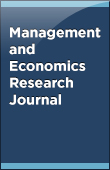


The commercial banks in Kenya have been recording declining performance over the recent past, with the lower-tier banks being the hardest hit. As a result, several banks in the lower-tier, such as Chase Bank, Dubai Bank of Kenya, and Imperial Bank, have been put under receivership. The collapse of banks does not give a good reflection of the sustainability of the banking system. Thus, the signals of poor financial performance need to be addressed promptly as the collapse of the banking system could also have a ripple effect on other sectors. The Kenyan banking sector is categorized into tier I, II, and III. The categorization is dependent on the size of the bank. The decline in profitability of the banking sector has affected tier II and III most. Also to note is that Tier one is made up of six giant banks that control close to half (49.9 percent) of the market, which begs the question as to whether the size of the bank has any influence on the performance of the banks. Therefore, this study sought to determine whether external financing influences Tier II and III performance and whether the bank size moderates this influence. Descriptive and explanatory research designs were employed in the study. The study population was 37 commercial banks in Tier II and III of the Central Bank's Lower-tier classification. Secondary data were adapted in the study for the years 2016 to 2020. After data cleaning, 26 banks were retained (70%) for further analysis. Data collected was analyzed by use of both descriptive and inferential analysis. Descriptive statistics included means, standard deviations, skewness, and Kurtosis, while inferential analysis included Multilevel Mixed Model Analysis and Hierarchical Multiple Linear Regression. The model coefficients show that equity has a positive and statistically significant relationship with the performance of lower-tier banks in Kenya measured using net profit margin (β=.229, p-value=.036<0.05). Further, the study found that size moderates the relationship between external equity and performance as an introduction of size in the model change R2 by .035 (p-value = 0.001). The study thus concludes that external equity capital positively influences the performance of lower-tier banks in Kenya, while size moderates the same. The study recommends that a bank evaluate when to use external equity funding, although external equity funding may be costlier. As a recommendation, lower-tier banks are encouraged to use external equity as this will improve their performance. Lower-tier banks are also encouraged to increase their asset base as their size moderates the banks' performance.